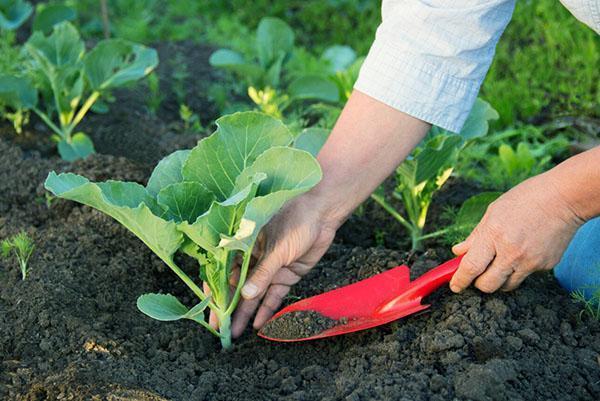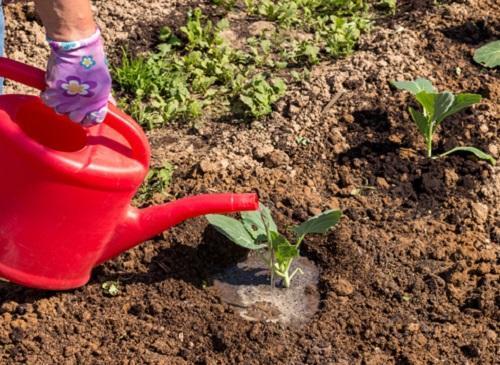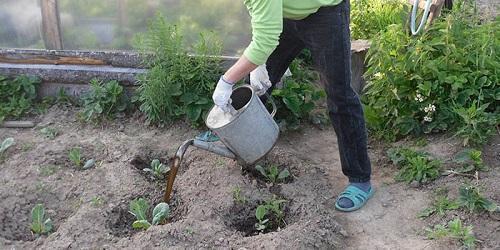Care of cabbage seedlings after planting in the garden
 With the onset of May, gardeners have new concerns - it's time to plant seedlings of vegetable crops in the garden, including cabbage, without which more than one self-respecting summer resident cannot do. Some grow it on their own, others buy ready-made seedlings. However, in both cases, after planting, it is important to pay increased attention to the plants, because the future harvest depends on this.
With the onset of May, gardeners have new concerns - it's time to plant seedlings of vegetable crops in the garden, including cabbage, without which more than one self-respecting summer resident cannot do. Some grow it on their own, others buy ready-made seedlings. However, in both cases, after planting, it is important to pay increased attention to the plants, because the future harvest depends on this.
Spring is usually quite deceiving, if the sun warms the earth well during the day, then there are often frosts at night. In order to protect cabbage seedlings from freezing, the beds are recommended to be covered. If possible, you can use a special material (white spunbond), as a last resort, old newspapers are also suitable. Such sheltered will also protect the planting from the sun.
You can remove the shelter a week after the cabbage is planted or when the air temperature rises to 18 degrees during the day.
Further care for cabbage seedlings after planting in open ground includes:
- regular watering;
- fertilization;
- treatment of plantings for protection and pest control.
Read also the article:Chinese cabbage growing in Siberia!
Watering mode for cabbage seedlings

Cabbage is a very moisture-loving vegetable; it requires regular watering to form strong heads of cabbage. It should be carried out in the evening at intervals:
- at least 2 days - in hot weather;
- about 5 days - on cloudy days.
After watering, it is imperative to loosen the ground around the bush so that a crust does not form, which prevents air from reaching the roots. Three weeks after transplanting, the seedlings can be spud. Re-hilling is done a week after the first.
To prevent the soil from drying out quickly, a mulching layer (peat, straw) should be laid on the beds.
Top dressing of cabbage

After the seedlings take root and start growing, they must be fed with nutrients:
- After 2 weeks after planting, apply nitrogen fertilizers. Dilute 5 g in a bucket of water saltpeter or prepare an infusion of bird droppings in a 1:10 ratio. Instead of bird droppings, you can use mullein, reducing the proportions in half. Consumption - 1 liter of solution per bush.
- During the formation of heads of cabbage, carry out root dressing containing potassium and phosphorus. In 10 liters of water, mix 8 g of potassium sulfate, 5 g of double superphosphate and 4 g of carbamide.
If necessary, if the cabbage develops poorly, it must be additionally fertilized with a mixture of potassium chloride and superphosphate in a 1: 2 ratio.
The break between feeding should be at least 3 weeks.
Cabbage pest control

To protect the plantings from the attack of pests, it is recommended to use folk methods - they definitely will not harm the future harvest, which means that such cabbage will be absolutely safe for eating.
So, to protect against fleas and slugs, young seedlings after planting must be powdered with ash. Caterpillars and aphids are well destroyed by the infusion of onion peels. Pour a full liter jar of husks into a bottle and pour 2 liters of boiling water.Insist for 2 days, before use, dilute with 2 liters of liquid and pour in a little liquid soap for better adhesion. Spray the cabbage.